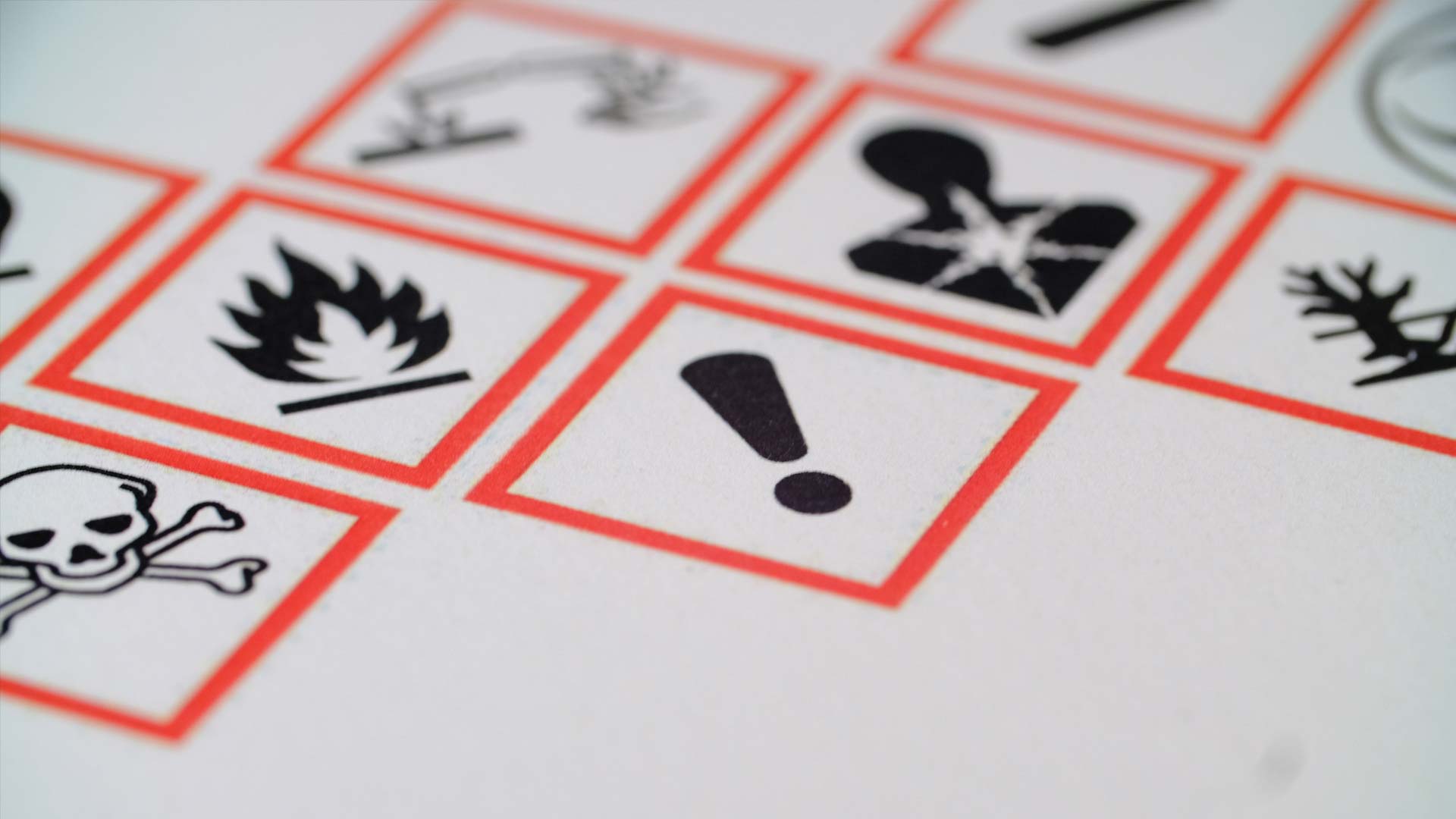The landscape of chemical safety within the European Union (EU) is constantly evolving, driven by the imperative to protect both human health and the environment. A significant recent development is the introduction of New CLP (Classification, Labelling and Packaging) hazard classes, which will have a direct impact on Safety Data Sheets (SDSs) and how chemical hazards are communicated across the supply chain. Understanding these changes is crucial for manufacturers, importers, downstream users, and distributors of chemical substances and mixtures within the EU. This article will break down the key aspects of these CLP classification changes, providing you with the essential knowledge to navigate these updated Chemical safety regulations in EU.
The Driving Force: Why New Hazard Classes?
The introduction of these New CLP hazard classes is a direct outcome of the European Commission's commitment to enhancing chemical safety, as outlined in their Chemical Strategy for Sustainability. Existing Chemical safety regulations in the EU, primarily the CLP (Classification, Labelling and Packaging) Regulation (EC) No 1272/2008, were deemed to have certain gaps in addressing specific types of hazards. The new classifications aim to rectify these shortcomings by providing a more comprehensive framework for identifying and communicating risks associated with substances that have:
- Endocrine Disrupting (ED) properties: Affecting the hormone systems in humans and the environment.
- Persistent, Bioaccumulative and Toxic (PBT) or very Persistent and very Bioaccumulative (vPvB) properties: Substances that persist in the environment, accumulate in living organisms, and are toxic.
- Persistent, Mobile and Toxic (PMT) or very Persistent and very Mobile (vPvM) properties: Substances that are persistent and mobile in the environment, potentially leading to long-term contamination of water resources, and are toxic.
These New CLP hazard classes reflect a growing scientific understanding of the potential long-term and widespread effects of these specific hazard types, which may not have been fully captured under previous CLP classification changes. By incorporating these into the Chemical safety regulations in the EU, the aim is to ensure better protection for both human health and the delicate balance of ecosystems.
Unpacking the New CLP Hazard Classes: What They Mean for Your SDS?
The introduction of these new hazard classes necessitates significant updates to Safety Data Sheets. Suppliers will now be required to assess their substances and mixtures for these specific properties and, if classified, include this information in Section 2 (Hazards identification) and Section 15 (Regulatory information) of the SDS. Let's take a closer look at each of these New CLP hazard classes:
1. Endocrine Disruptors (ED)
Endocrine disruptors are substances that can interfere with the endocrine system, potentially causing adverse health effects in humans or wildlife. The New CLP hazard classes introduce two categories for endocrine disruptors, both for human health (ED HH) and for the environment (ED ENV):
- Category 1 (Known or presumed endocrine disruptor): This classification applies when there is strong evidence based on scientific studies showing endocrine disrupting effects in humans or the environment.
- Category 2 (Suspected endocrine disruptor): This classification is used when there is some evidence of endocrine disrupting effects, but it is not strong enough to warrant a Category 1 classification.
For SDS authors, this means carefully evaluating the available scientific literature and test data to determine if a substance meets the criteria for either ED HH 1, ED HH 2, ED ENV 1, or ED ENV 2. If a substance is classified as an endocrine disruptor under these New CLP hazard classes, this classification and the corresponding hazard statement (e.g., EUH380 "May cause endocrine disruption in humans" or EUH430 "May cause endocrine disruption in the environment") must be clearly indicated in the SDS. This is a significant change in the CLP classification and requires a thorough understanding of the assessment criteria
2. PBT and vPvB Substances
PBT and vPvB substances pose long-term risks to the environment and potentially to human health due to their persistence in the environment, their ability to accumulate in living organisms, and their toxicity. The New CLP hazard classes formalize the classification criteria for these substances:
- PBT (Persistent, Bioaccumulative and Toxic): A substance is classified as PBT if it meets specific criteria for persistence (does not readily degrade), bioaccumulation (accumulates in organisms), and toxicity (causes adverse effects).
- vPvB (very Persistent and very Bioaccumulative): This classification applies to substances that meet even stricter criteria for persistence and bioaccumulation, indicating a very high potential for long-term environmental impact.
When assessing substances under these New CLP hazard classes, SDS authors will need to consider data on degradation rates, bioaccumulation potential (e.g., octanol-water partition coefficient and bioconcentration factor), and toxicity. If a substance is classified as PBT (EUH440 "Accumulates in the environment and living organisms including in humans") or vPvB (EUH441 "Strongly accumulates in the environment and living organisms including in humans"), this information must be included in the relevant sections of the SDS, as mandated by the updated CLP regulations in EU.
3. PMT and vPvM Substances: A New Focus on Mobility
The PMT and vPvM classifications introduce a novel aspect to the CLP regulations in EU by considering the mobility of persistent substances in the environment, particularly their potential to contaminate water resources.
- PMT (Persistent, Mobile and Toxic): A substance is classified as PMT if it is persistent, shows a high potential for mobility in the environment (e.g., high water solubility and low adsorption to soil), and is toxic.
- vPvM (very Persistent and very Mobile): This classification applies to substances that meet even stricter criteria for persistence and mobility, indicating a very high potential for long-lasting and widespread water contamination.
Evaluating substances for PMT (EUH450 "Can cause long-lasting and diffuse contamination of water resources") or vPvM properties requires considering data on persistence, mobility (e.g., Koc value, leaching potential), and toxicity. The inclusion of these New CLP hazard classes in the CLP classification highlights the growing concern about the long-term impacts of mobile and persistent chemicals on water quality, a critical aspect of the CLP regulations in EU.
Implications for Safety Data Sheets: What Needs to Change?
The introduction of these New CLP hazard classes necessitates a comprehensive review and update of existing Safety Data Sheets and the creation of compliant SDSs for new substances and mixtures. Here's a breakdown of the key changes for SDS authors:
- Hazard Identification (Section 2): This section must be updated to include the classification of the substance or mixture according to the new ED, PBT/vPvB, and PMT/vPvM hazard classes, if applicable. The corresponding hazard statements and any precautionary statements related to these new hazards must also be included.
- Regulatory Information (Section 15): This section needs to reflect the regulatory status of substances classified under these new hazard classes. This may include information about whether the substance is identified as a Substance of Very High Concern (SVHC) due to its ED or PBT/vPvB properties, even if this was previously addressed under REACH without a specific CLP hazard class. The inclusion of PMT/vPvM classifications will also add a new layer of regulatory information to the SDS under the evolving CLP regulations in EU.
- Review of Existing Data: Companies will need to thoroughly review existing toxicological and ecotoxicological data for their substances and mixtures to assess whether they meet the criteria for the New CLP hazard classes. This may involve re-evaluating existing studies or even commissioning new studies to generate the necessary data for accurate classification as part of the CLP classification changes for the SDS update.
- Communication in the Supply Chain: It is crucial for suppliers to communicate these new classifications down the supply chain through updated SDSs. Downstream users need this information to ensure the safe handling and use of chemical products and to comply with their own obligations under the CLP regulations in EU.
Timelines and Implementation: When Do These Changes Take Effect?
The New CLP hazard classes were introduced through Commission Delegated Regulation (EU) 2023/707, which entered into force on April 20, 2023. However, there are transitional periods for the application of these new classifications:
- For new substances placed on the market: Compliance is required by May 1, 2025.
- For existing substances already on the market: Compliance is required by November 1, 2026.
- For new mixtures placed on the market: Compliance is required by May 1, 2026.
- For existing mixtures already on the market: Compliance is required by May 1, 2028
These timelines highlight the urgency for companies to begin assessing their substances and mixtures against the criteria for the New CLP hazard classes and to update their SDSs accordingly. The ECHA (European Chemicals Agency) has been providing guidance and will continue to do so to assist companies in complying with these updated Chemical safety regulations in EU.
Navigating the Future of Chemical Safety: Resources and Support
Understanding and implementing these New CLP hazard classes is a significant undertaking. Fortunately, there are resources available to help companies navigate these changes:
- ECHA Guidance: ECHA is actively updating its guidance documents on the application of the CLP criteria to incorporate the new hazard classes. These guidelines provide detailed explanations of the criteria and offer advice on how to assess substances and mixtures.
- Industry Associations: Many industry-specific associations are providing guidance and support to their members on the implementation of the new CLP requirements.
- Training Courses: Numerous training courses are being offered to help SDS authors and regulatory professionals understand the new hazard classes and their implications for SDS preparation.
- Software Solutions: Chemical management software providers are updating their systems to incorporate the new hazard classes, which can assist companies in the classification and SDS authoring process.
Conclusion
Staying informed, utilizing available resources, and proactively assessing their chemical portfolios, companies can effectively navigate the implementation of the New CLP hazard classes and ensure compliance with the evolving Chemical safety regulations in EU. This proactive approach will not only ensure legal compliance but also contribute to a safer and more sustainable future for both human health and the environment. The CLP classification changes are a significant step forward in our collective efforts to manage chemical risks effectively.





